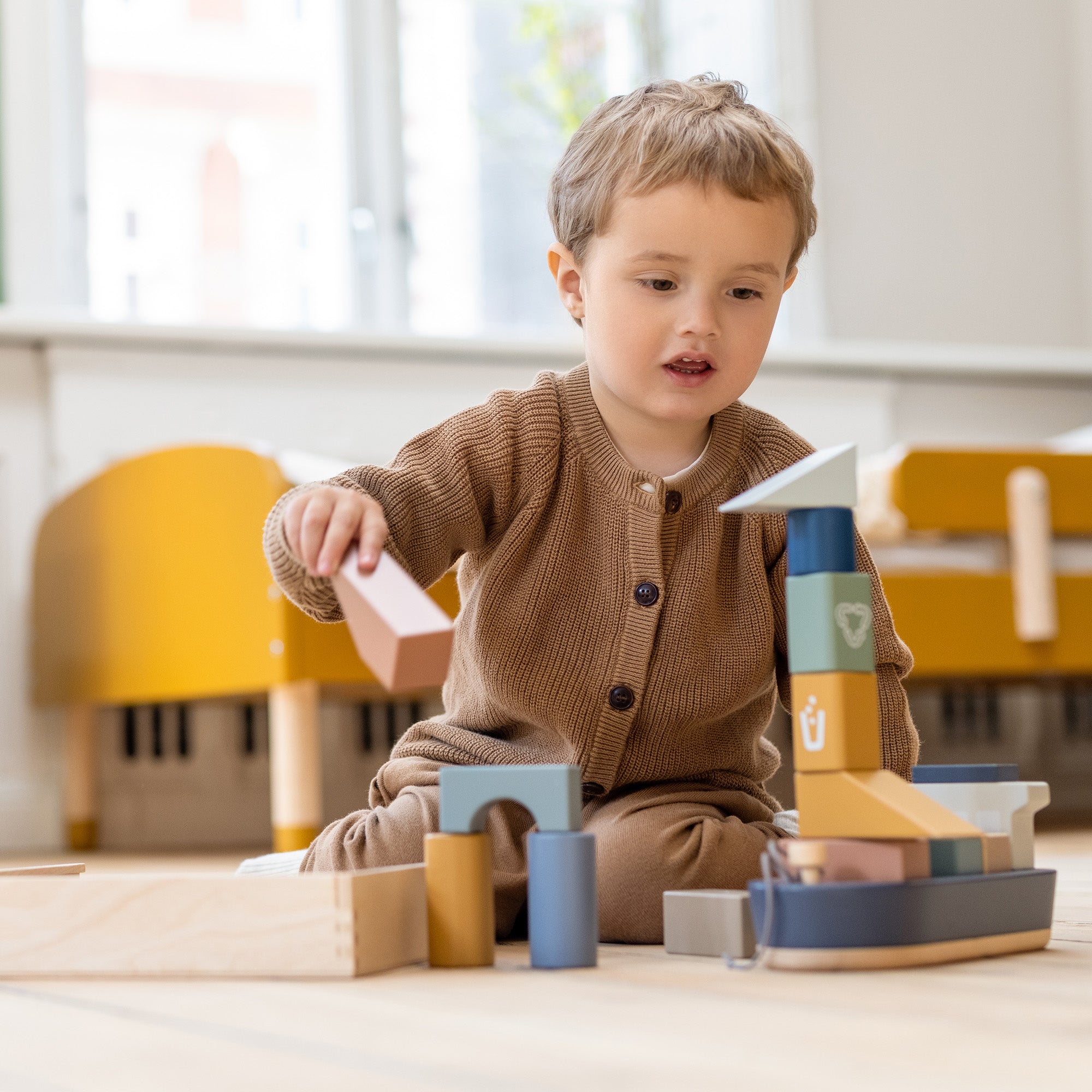So much happens between the ages of 1,5 and 2 years. Your toddler begins to walk, and soon after they can run (fast!). The pincer grasp gets fully developed, and creative skills like drawing and making music are being discovered with great enthusiasm. Be sure to support your child’s fast-moving development with toys that are both stimulating, safe, and fun – here are five toys to consider for toddlers between 18-24 months.
Highlights:
- For your child, this life stage is perceived as a very happy and optimistic time.
- Support your child’s fast-moving development with toys like:
- Building blocks: a concentration task which improves your toddler’s fine motor skills.
- Crayons: boost your toddler’s self-esteem by displaying their colourful artwork.
- Drum set: rhythmic accuracy paves the way for your child’s language skills.
- Bean bags: challenge your child's motor skills as well as throwing and aiming skills.
- Slide: develops your child’s balance and social skills (sharing & turn-taking).
A Happy & Optimistic Time
For children between the ages of one and two, anything is seen as a fun toy – including the electronics in the kitchen cabinets and the dirt in your living room planters! Expert in children’s play, Joern Martin Steenhold, explains how children at this age play and perceive the world:
“For toddlers, the time between their first and second birthday is perceived as a very happy and optimistic time. Kids of this age start to increase their attention span, they have high thoughts of themselves, and they constantly look for activities to make them better, smarter, and stronger.”
As parents, we can support our children’s fast-moving development with toys that stimulate a diverse skill set – from motor skills to cognitive skills and everything in between. Here are five type of toys to consider:
(The article continues below the images)
1. Building Blocks
Go for this type: Building Blocks where each piece is uniquely shaped, sized, and coloured inspire hours of constructive play. The box is also fun to play with!
Why your toddler will love it: toddlers enjoy filling empty boxes – and they sure love stacking blocks and knocking them down! It’s a game where they learn to recognize shapes and sizes and plan new moves in logical sequences. Plus, all this concentrated stacking improves their fine motor skills and hand-eye coordination.
2. Colourful Crayons
Go for this type: see if you can find smudge-free Crayons which are easy to use for your little one who has yet to master the skill of holding a pencil.
Why your toddler will love it: at this age, your little Da Vinci likes to experiment just for the fun of it and not to achieve a specific result. Let your child freely explore all the colours of the rainbow and practice new vocabulary by asking what’s on their drawing. It boosts your child’s self-esteem when they discover their own artwork on the family’s pin-up board.
3. Drum Set
Go for this type: a toddler-sized Drum with a set of matching drumsticks.
Why your toddler will love it: two years old, and you can suddenly hear your toddler sing short phrases of a song – some keys are in tune and some are out of tune. Next step is singing and playing, and drumming lets your child become familiar with timing, tempo, and rhythmic accuracy, all important aspects of early language development.
4. Bean Bags
Go for this type: Bean Bags where each bag has a unique texture, weight, or shape to grow your toddler’s curiosity.
Why your toddler will love it: physical workout is both entertaining and educational for children between the age of 1,5 and 2 years. With a set of miniature bean bags, you can play “hit the target” and practice your child’s throwing and aiming skills. You can make an obstacle course to train your child’s navigational skills. And you can challenge your child’s gross motor skills with exercises such as jumping-over or one-legged standing.
5. Slide
Go for this type: a Slide with low climbing steps and extended railings for your little one to hold on to while sliding down.
Why your toddler will love it: any type of toy which invites your fast-moving toddler to climb and tumble is a real hit! Watch your toddler climb the steps, one by one, and improve their sense of balance when sliding down. And when playing with others, the slide is a great toy for your little one to also practice social skills, like sharing and turn-taking.

